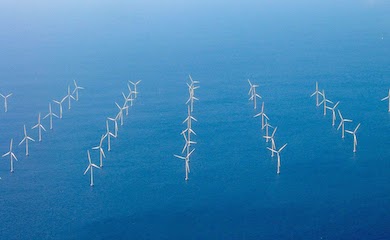As wind farm development throughout the UK continues to expand, the number of attractive potential sites is diminishing. Wind farm developers and consultants alike are continuously searching for suitable locations.
To rely on discovering sites that have no issues impeding development is now more than ever an unrealistic and short-sighted strategy, because any potential site is likely to carry risks, it is evaluating the significance of these risks and the associated consequences for the development that can determine how successful, or indeed unsuccessful, a site finding strategy will be. We believe that development of a computer based risk assessment will offer an unrivalled advantage for strategic development.
Aviation Concerns
The biggest constraint for wind farms in the United Kingdom is aviation concerns. In particular, the impact of turbines on radar is a key issue, for both military stakeholders, such as the MoD, and civil stakeholders, such as NATS. Irresponsibly sited turbines can have adverse effects on both primary and secondary radar, as well as other navigation aids. Furthermore, they can be physical obstructions to aerodromes and low flying areas. Evaluating the consequences of these concerns and issues is not straightforward.
Numerous parties may have concerns with any one potential wind farm site. There are many systems which can be impacted by wind turbines and each of these has a number of associated technical mitigations which can provide solutions. Furthermore, these solutions are constantly evolving. This means that the relationship between wind farms and aviation infrastructure will never be a static one. Managing this relationship effectively is a challenge of utmost importance for any developer or consultant. Achieving this would allow unsuitable sites to be discarded at an early stage, before time and recourses are dedicated to investigating it further. Additionally, low risk sites could be actively identified and pursued.
Radar Constraints
A comprehensive site selection process would incorporate radar constraints as a parameter. To encompass all of the radar related implications is anything but straightforward. There are numerous complexities, such as radar types, operating rules, stakeholder knowledge, practical experience of overcoming radar issues in the real world, mitigation technologies, assessment methodologies and cumulative effects. We are well suited to developing such a process as these are our core areas of expertise.
Computer Modelling System
We believe that the optimal approach is to develop a flexible, sophisticated, computer-based system designed to incorporate the significant complex elements of radar issues. This would effectively increase the value of the developers wind portfolio.
The output of the model would be risk maps, which could easily be imported and manipulated in a GIS. The model itself must be transparent, such that any developer or other stakeholder can clearly see how any risk value has been ascertained. The model must have both objective elements based on technical and software skill and subjective elements based on expert knowledge and experience. These two aspects objective and subjective must be unambiguously separated such that the transparency of the model is upheld.
The site selection process, based on such a model, would be customisable insofar as it will incorporate the developers particular requirements such as appetite for risk, mitigation expenditure and wind farm size.
Inputs for the model would be determined by developer strategy. A basic radar strategy may consider radar visibility, distance from radar and airfields and one or more radar propagation techniques. These considerations would determine the inputs, and the items listed in this example all have associated quantities which are largely objective.
A more advanced strategy may also take into consideration future radar/system upgrades, airspace, physical safeguarding, attitudes of particular individuals, policy/regulatory changes, upcoming mitigation technologies and costs etc. Clearly, the corresponding inputs here are more complex and less objective. It is considerations such as these that require the introduction of subjective assessment and expertise.
A successful model must combine the inputs and process them in a meaningful way in line with the developers requirements. The simplified schematic below illustrates how constructing a model such as this can be approached. Note that the subjective and objective elements can be kept separate as discussed above.
Note the distinction between objective and subjective elements in producing a meaningful result. The ultimate goal of this system is to assign a risk percentage to a given site, which will give a comprehensive insight into the viability of the wind farm.
We are a leading authority in the assessment of technical problems for wind developments, specifically aviation related issues, and is currently developing a system which evaluates potential wind farm sites according to the model described above. This will provide clients with comprehensive and up-to-date assessment of sites. The models high level of flexibility and wide range of output formats ensure its potential to add value to any proposed wind farm.



